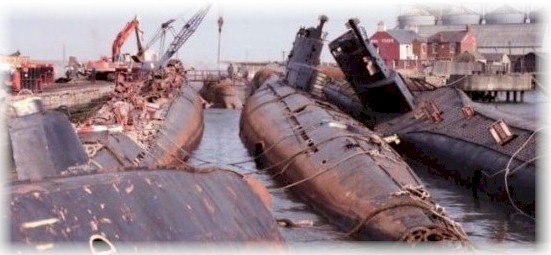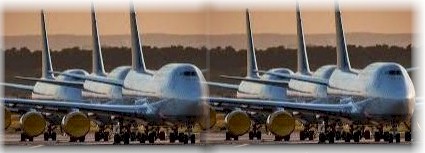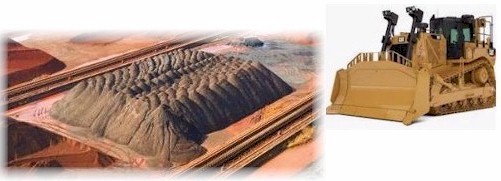Countertrade
for students of Prof. W.T.G. Richardson

|
Countertrade for students of Prof. W.T.G. Richardson |
 |
| . | This Unit
used in the courses
MRK 460 IBM600 |
MGTC44
MGTC46 |
| LEARNING
OBJECTIVES |
The purpose
of this section is to introduce the student to
o the importance of Countertrade and o demonstrate, by example, the different ways Countertrade can be done |
 |
An introduction
to Countertrade, and the forms in which Countertrade can take place, may
be seen on the website of the London Countertrade Roundtable.
"The London Countertrade Roundtable (LCR) was established in 1988 as a focal point for all those involved in countertrade, offset and related activities. Its main objective is "to bring together companies and individuals engaged in the profession of countertrade in its broadest sense", and to promote co-operation, exchange of information, and opportunities for networking." www.londoncountertrade.org/index.html |
| Countertrade
Explained |
LCR explains
"Countertrade is inherently an ad hoc activity - practice varies according to local regulations and requirements, the nature of the goods to be exported and the current priorities of thee parties involved. Also, the terms used to describe the main modes of trading vary, often interchangeably causing confusion. " - which is a fancy way of saying - countertrade can be a lot of things depending on who is involved permission to quote , and link, given to Prof. Richardson by Robert Scallon robert.scallon@uk.thalesgroup.com in an email 2004 Dec 02. Copy of the email is on file in Richardson's permissions binder |
| Countertrade
and Barter - an introduction |
"Countertrade
consists of transactions which have as a basic characteristic a linkage,
legal or otherwise, between exports and imports of goods or services in
addition to, or in place of, financial settlements. Countertrade can be
used as an effective international business tool. Countertrade plays a
part in 20-25 percent of world trade."
from www.cob.ohio-state.edu/citm/expa/countertrade.html
|
| Countertrade
and Barter - an introduction |
Why Countertrade?
1. The world debt crisis
has made ordinary trade financing very risky.
2. Many countries cannot
obtain the trade credit or financial assistance to pay for desired imports.
3. Countries are increasingly
returning to the notion of bilateralism as a way to reduce trade imbalances.
4. Countertrade is often
viewed as an excellent mechanism to gain entry into new markets. The party
receiving the goods may become a new distributor, opening up new international
marketing channels and ultimately expanding the market.
5. Providing countertrade
services helps sellers differentiate its products from those of competitors.
from Fisher College of Business, Ohio State University - with notes added by witiger |
| Countertrade
and Barter - an introduction |
Why Countertrade?
Elderkin & Norquist, in their book "Creative Countertrade," say that companies countertrade in order to:
|
| Countertrade
and Barter - an introduction |
According to
the LCR, There are
Four main reasons why countertrade is used:
"to enable trade to take place in markets which are unable to pay for imports. This can occur as a result of a non-convertible currency, a lack of commercial credit or a shortage of foreign exchange" "to protect or stimulate the output of domestic industries (including agriculture and mineral extraction) and to help find new export markets" "as a reflection of political and economic policies which seek to plan and balance overseas trade" |
| Countertrade
Strategies |
Four
Countertrade Strategies
Defensive. "Companies with a defensive countertrade strategy ostensibly do not countertrade at all; however, they make many countertrade-type arrangements with buyer countries. These companies will avoid any contractual countertrade obligations, but they make it clear to the country that they will reciprocate in some way for the sale. Some companies will sell their products at rock-bottom prices and promise to help the country with export development." Passive. "Companies with passive countertrade strategies regard countertrade as a necessary evil. They participate in countertrade at minimal level, on an ad hoc basis. Some companies operate this way because they have product leverage (i.e., little or no competition), while others follow the passive strategy because of disinterest in countertrade." Reactive. "This is the most common strategy among American companies. Companies with reacting strategies will cooperate with the buyer country in offset/countertrade requirements, they use countertrade strictly as a competitive tool, on the theory that they cannot make the sale unless they agree to countertrade." Proactive. "Companies with proactive strategies have made a commitment to countertrade. They use countertrade aggressively as a marketing tool, and are interested in making trading an active and profitable part of their business. They regard offset and counterpurchase as an opportunity to make money through trading, rather than as an inconvenience." from http://www.barternews.com/american_way.htm
|
| Types of countertrades | According
to the LCR, There are
Six main types of countertrade 1. Offset
|
| Types of countertrades | As explained
by the LCF website FAQ www.londoncountertrade.org/countertradefaq.htm
1. Offset "Offset has traditionally been used by governments around the world when they have made major purchases of military goods but is becoming increasingly common in other sectors. There are two distinct types: A. direct
offset: "the supplier agrees to incorporate materials, components or
sub-assemblies which are procured from the importing country. In some large
contracts, successful bidders may be required to establish local production.
Direct offset has been particularly common for trade in defence systems
and aircraft."
"The overall objective of offset either, direct or indirect, in the defence sector generally to promote import substitution and to minimise the balance of payments deficit for military purchases by developiing an indigenous industrial defence capability." |
| Types of countertrades | 2. Counterpurchase
"A foreign supplier undertakes to purchase goods and services from the purchasing country as a condition of securing the order. Counterpurchase is generally imposed for two reasons: first, to stimulate exports and second, to alleviate the balance of payment deficit resulting from imported goods." |
| Types of countertrades | 3. Tolling
Manufacturers, in regions such as the Former Soviet Union, may sometimes be unable to service customers because they lack the foreign exchange to buy raw materials. In a tolling deal, a supplier himself provides the raw material (steel ingots, say) and hires capacity of the factory to turn it into finished goods (e.g. steel tubes). These are then bought by a final customer who pays the supplier in cash - throughout the process the supplier retains ownership of the material as it is procecessed by the factory." - this is similar to Contract Manufacturing where the Contractor provides much of the materials. |
| Types of countertrades | 4. Barter
Barter is one of the most
common methods of Countertrade. "In a barter deal, goods are exchanged
for goods - the principal export is paid for with goods (or services) from
the importing market. A single contract covers both flows and in
the simpler case, no cash is involved. In practice, however, the supply
of the principal export is often released only when the sale of the bartered
goods has generated sufficient cash."
|
| Types of countertrades | 5. Buyback
"Here, suppliers of capital plant or equipment agree to be paid by the future output of the investment concerned. For example exporters of equipment for a chemical plant may be repaid with part of the resulting output from the factory. This practice is most common with exports of process plant, mining equipment and similar orders. Buyback arrangements tend to be much longer term and for larger ammounts than counterpurchase or barter deals." |
| Types of countertrades | 6. Switch
Trading
"Imbalances in long term
bilateral trading agreements sometimes lead to the accumulation of uncleared
credit surpluses in one or other country, For example, Brazil at one time
had a large credit surplus with Poland. These surpluses can sometimes be
tapped by third countries so that, for example UK exports to Brazil could
be financed from the sale of Polish goods to the UK or elsewhere. Such
transactions are known as ‘switch' or ‘swap' deals because they typically
involve switching the documentation (and destination) of goods on the high
seas."
LCR advises that "...deals seldom fit these categories precisely. It is not unusual for a large export deal to involve several countertrade arrangements - for example, some long term buyback plus counterpurchase or barter to finance initial down payments." |
| Countertrade
and Barter examples |
Pepsi & Vodka
John G. Swanhaus, Jr., vice
president, Pepsi Cola Company
Pepsi & Vodka -how did
it work,
|

Following the Pepsi / Vodka
deal, Pepsi took 17 submarines,
a cruiser, a frigate, and
a destroyer in payment for Pepsi products.
The of 20 naval vessels
were sold for scrap steel, thereby paying for Pepsi products being moved
to the Soviet Union AND
briefly making Pepsi the 6th most powerful navy in the world.
explained at http://www.barternews.com/approach_marketing.htm
.
| Countertrade
examples |
 |
| Countertrade
examples |

. |
| Countertrade
examples |
|
.cc.. . .,,,,
|
|
CONTACT I MAIN PAGE I NEWS GALLERY I E-BIZ SHORTCUTS I INT'L BIZ SHORTCUTS I MKTG?BUSINESS SHORTCUTS I TEACHING SCHEDULE |
| . | |
|
MISTAKES
I
TEXTS
USED I
IMAGES
I
RANK
I
DISCLAIMER
I
STUDENT
CONTRIBUTORS I FORMER
STUDENTS I PUBLICATIONS
I TIPSI |
|
| . |
Prof.
W. Tim G. Richardson©www.witiger.com![]()